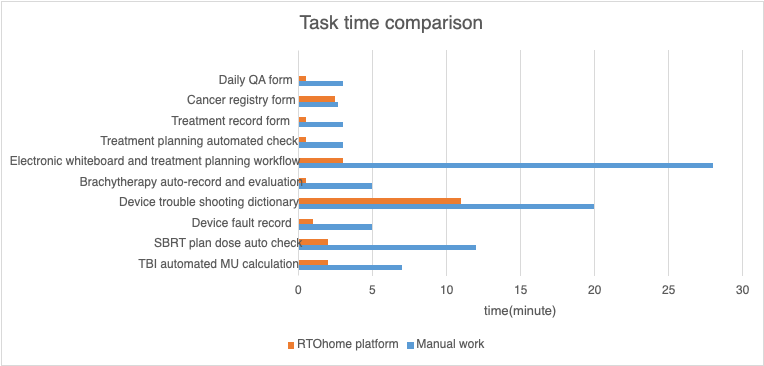Comprehensive integrated radiotherapy information platform
JinHuei Ji,
Taiwan, Province of China
PO-2313
Abstract
Comprehensive integrated radiotherapy information platform
Authors: JinHuei Ji1, Ting-Chun Lin1,3, Chih-Yuan Lin2, Ji-An Liang1, Shu-Sheng Li1, Ti-Hao Wang1
1China Medical University Hospital, Radiation Oncology, Taichung, Taiwan; 2China Medical University Hospital, Radiation Oncology, Taichung, Taiwan; 3China Medical University, Graduate Institute of Biomedical Sciences, Taichung, Taiwan
Show Affiliations
Hide Affiliations
Purpose or Objective
The purpose of this work is to build a system to integrate radiation oncology information. This in-house developed system, RTOHome, connects the hospital system and radiation oncology treatment planning system, which can improve the work efficiency and communication process of our colleagues. The system also helps us establish automated quality assurance, reduce error rates, and maintain patient safety.
Material and Methods
HTML, jQuery, JavaScript and Bootstrap were applied as the main tools for front-end web design. The back-end database used PHP 5.6.30 and standard SQL language, and the ARIA database connection relied on SQL server express.
This integrated radiation oncology information system has seven features as follows (Figure 1):
1. Cloud-based digitization of radiation therapy (RT) treatment planning workflow.
2. Cloud-based digitization of RT equipment quality assurance workflow.
3. Cloud-based digitization of treatment statistics and treatment-related equipment failure records.
4. Online system for treatment plan evaluation and clinical handover.
5. RT document integration and treatment equipment troubleshooting online platform.
6. Cancer registration system and treatment charge query system.
7. External beam RT treatment dose record and clinical task system.
Figure 1. RTOHome platform webmap

Results
After applying this system, most clinical tasks did not need to be performed in written form anymore. In addition, as data entry were updated in the database serially, this system helped our department reduce input errorsand save our staff much time during data entry (Figure 2). Moreover, the information system was real-time, which helped improve our clinical productivity and reduce human error.
Figure 2. Task time comparison between RTOHome platform and manual work

Conclusion
This online integrated system solved the bottleneck in our previous clinical workflow. With this system, we not only improved the RT treatment process, but also saved much time for our working staff, reduced clinical error and improved patient safety.